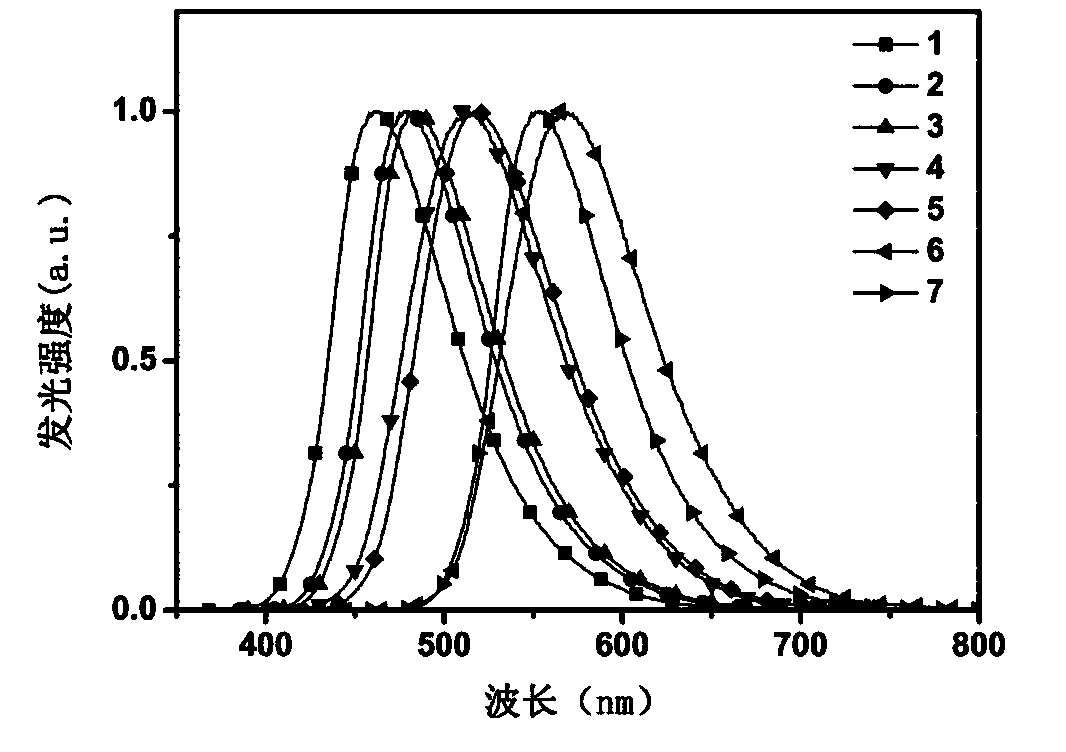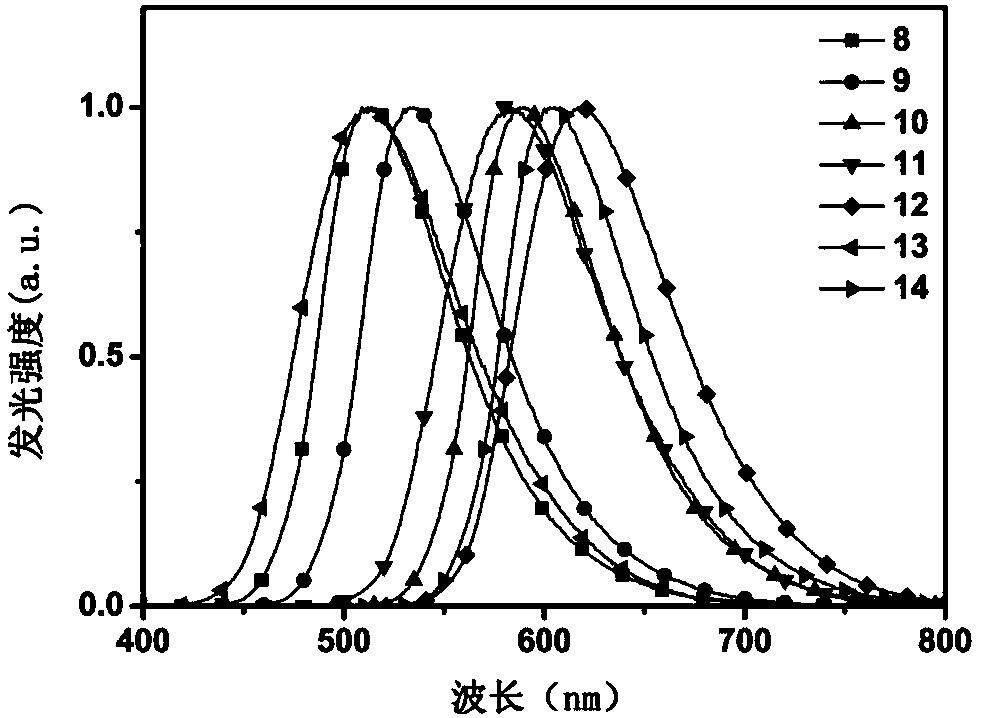Heat-inducible delayed fluorescence polymer with main chain comprising diphenyl silane and carbazole unit and preparation method of heat-inducible delayed fluorescence polymer
A technology of diphenylsilicon and carbazole units is applied in the field of thermally induced delayed fluorescent polymers and their preparation, which can solve the problems of low triplet energy level, affecting the full utilization of triplet excitons, and difficult to achieve full-color luminescence, etc. Achieve high triplet energy level, efficient thermally induced delayed fluorescence emission properties, and easy industrial production.
- Summary
- Abstract
- Description
- Claims
- Application Information
AI Technical Summary
Problems solved by technology
Method used
Image
Examples
preparation example Construction
[0054] The present invention also provides a method for preparing a heat-induced delayed fluorescent polymer whose main chain contains diphenylsilicon and carbazole units according to claim 1, comprising:
[0055] Copolymerize the monomers with the structures of formula (III), formula (IV) and formula (V) to obtain the polymer shown in formula (I),
[0056]
[0057] Among them, R 1 , R 2 independently selected from C1-C20 alkyl groups or C6-C30 aryl groups;
[0058] A is a fluorescent dye unit containing an electron donor / acceptor twisted structural unit;
[0059] x is 0
[0060] n is 2-200.
[0061] According to the present invention, the present invention copolymerizes the monomers having the structures of formula (III), formula (IV) and formula (V) to obtain the polymer shown in formula (I), wherein, the present invention has no special requirements on the conditions of copolymerization , any copolymerization method known in the art can be used, and the catal...
Embodiment 1
[0064] Embodiment 1: the synthesis of polymer I-1
[0065] (1) Preparation of two (4-bromophenyl) diphenyl silicon
[0066] The preparation process is shown in the following reaction equation:
[0067]
[0068] The specific steps are: add p-dibromobenzene (9.44g, 40.0mmol) and dry 100ml tetrahydrofuran into a 250ml flask, pump and exchange gas, protect with argon, and dry ice acetone bath. Take 16ml of n-butyllithium (2.5M) in a constant pressure dropping funnel, and slowly add it dropwise to the stirred reaction solution until the dropwise addition is complete. After keeping the reaction at low temperature for 1 h, inject diphenyl silicon dichloride (4.2 ml, 20.0 mmol) into the reaction liquid, return to room temperature naturally, and react overnight. The reaction solution was poured into 200ml of water, extracted twice with 100ml of ether, the organic phase was collected, washed with saturated brine, dried over anhydrous sodium sulfate, filtered, and the solvent was re...
Embodiment 2
[0081] Embodiment 2: the synthesis of polymer I-2
[0082] (1) Preparation of 3,6-dibromo-9-(4-(4',6'-phenyl-1,3,5-triazine))phenylcarbazole
[0083]
[0084] The specific steps are: 3,6-dibromocarbazole (1.30g, 4.0mmol), 2-(4-fluorophenyl)-4,6-diphenyl-1,3,5-triazine (1.14g , 3.5mmol) and cesium carbonate (2.60g, 8.0mmol) in 30ml of N,N-dimethylformamide, gas exchanged, stirred at 150°C for 20h under the protection of argon. Cool to room temperature, pour the reaction solution into 200ml of water, precipitate a large amount of solids, filter with suction, wash with water, collect the filter cake and disperse it in 30ml of ethanol, ultrasonicate for 5 minutes, heat and stir at 70°C for 10 minutes, filter with suction, repeat twice, and dry to obtain 2.0 g of light yellow solid, yield 90%. The mass spectrometry test is 630.0 (M + ).
[0085] (2) Synthesis of polymer I-2
[0086]
[0087] The specific steps are the same as those of polymer I-1, the monomer 3,6-dibromo-9...
PUM
| Property | Measurement | Unit |
|---|---|---|
| quantum efficiency | aaaaa | aaaaa |
| molecular weight distribution | aaaaa | aaaaa |
| molecular weight distribution | aaaaa | aaaaa |
Abstract
Description
Claims
Application Information
 Login to View More
Login to View More - R&D
- Intellectual Property
- Life Sciences
- Materials
- Tech Scout
- Unparalleled Data Quality
- Higher Quality Content
- 60% Fewer Hallucinations
Browse by: Latest US Patents, China's latest patents, Technical Efficacy Thesaurus, Application Domain, Technology Topic, Popular Technical Reports.
© 2025 PatSnap. All rights reserved.Legal|Privacy policy|Modern Slavery Act Transparency Statement|Sitemap|About US| Contact US: help@patsnap.com



